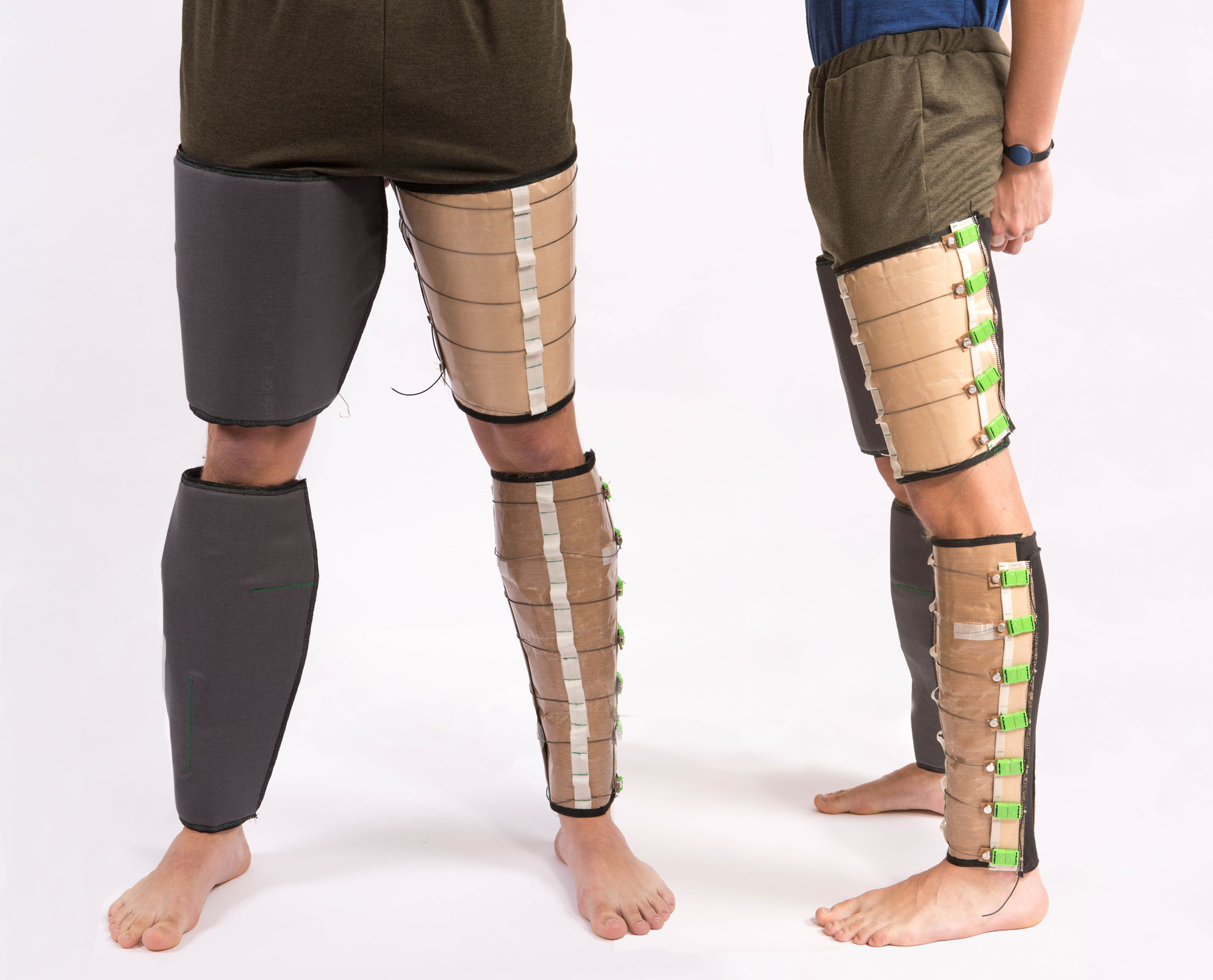Wearable technology has scores of potential health applications beyond fitness trackers. Brad Holschuh and Lucy Dunne (both Apparel Design) are paving the way to their development.

This spring, Minnesota Partnership for Biotechnology and Medical Genomics, a research collaborative between the U, Mayo Clinic, and the State of Minnesota, awarded Holschuh and Dunne a grant to develop a smart compression garment. In partnership with Bruce Johnson and Mike Joyner at Mayo Clinic, they will design a garment that can squeeze on command.
The market for compression garments is growing rapidly, and they are used to treat common medical conditions including vascular disease and sports injuries. However, many of the garments available today are uncomfortable, difficult to get into, require their wearers to remain stationary, or all of the above. The team’s final product will combine the best of features of the existing options into a slim garment that wearers can put on easily and control dynamically.
Holschuh has created garments like this before—for astronauts! As a researcher at MIT, he helped develop a skintight, pressurized spacesuit to improve mobility in zero gravity. That suit was made from a shape-changing material that’s stretchy at room temperature, but tightens when heated. The project team plans to integrate this technology in their terrestrial compression garment.
“We are excited to partner with experts at the Mayo Clinic on a project with such widespread application,” said Holschuh. “Compression garments are used by millions of people to treat a variety of circulatory and other ailments, and these garments are in desperate need of improvement. By combining expertise in both wearable technology and cardiovascular health, our team aims to bring compression garment technology into the 21st century, working to creating a smart fabric capable of providing targeted compression on command. Our ultimate goal is to use advanced technology to improve the comfort and health of all who use compression garments in their daily lives.”
A breakthrough invention in wearable technology has the potential to change how we interact with the clothes we wear every day.
From redesigning patient hospital gowns to creating a greenhouse for the winter months, College of Design faculty and graduate students work on the forefront of design research.





